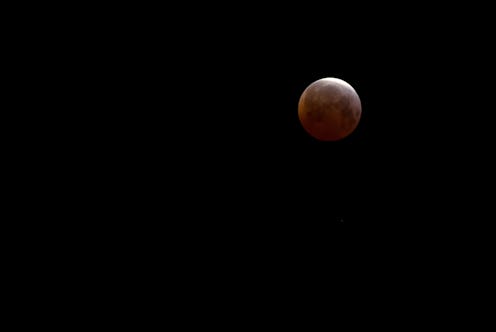Life
How To Look At The Solar Eclipse On Monday Without Going Blind

A major total solar eclipse that will be visible in the U.S. is set to occur Monday, Aug. 21, and you won't want to miss it. While solar eclipses happen every 18 months and technically aren't that rare, a solar eclipse that has a path of totality that travels through the middle of the United States is super rare, so you're going to want to know how to safely view the solar eclipse on Monday — because it's actually not as easy as simply looking up. In fact, simply looking up could leave you with permanent damage to your eyesight.
Yes, the solar eclipse can actually be a dangerous sight to see, unless you're equipped with protective eye wear. And, if you plan on landing in the path of complete totality you'll have to make plans to be somewhere between Oregon and South Carolina, because it's only along that path that the moon will entirely eclipse the sun.
No matter where you live or are planning to be during the eclipse, the first step to preparing for the sight is getting your safety glasses, because the sun's rays during an eclipse can be harmful from anywhere you stand. The sun's light juxtaposed with the shadow of the moon tricks the eye, and doesn't let it properly protect itself from the light, and can cause serious damage — so you need to cover your eyes. There are lots of glasses on the market that claim to be eclipse-safe (they require an ISO of 12312-2) but according to NASA, there are a lot of fakes on the market. One great NASA-approved brand is Lunt, which makes high end SUNoculars (sun-proof binoculars) and also affordable disposable glasses. Other brands that NASA endorses are: Rainbow Symphony, American Paper Optics and Thousand Oaks Optical — so make sure you get your glasses from one of those brands, first.
The next step is figuring out where you want to see the eclipse. The path of totality is a 70-mile-wide, 3,000-mile-long stretch that starts off at the coast of Oregon and goes all the way across the country to South Carolina, lasting for about two minutes. Sweeping across the entire country in about 90 minutes, the astronomical event will happen fast. If you want to see the sky go entirely dark, here's where you'll have to be: Oregon, Idaho, Wyoming, Nebraska, Kansas, Missouri, Illinois, Kentucky, Tennessee, Georgia, North Carolina, or South Carolina. If you're anywhere else, the sun will look like a cookie that's been bitten — which is still going to be an awesome sight to see, and something totally out of the ordinary if you've never seen an eclipse before, but it won't be that full, blackout effect.
If you have a way to get to the path of totality for the eclipse, lucky you. But if you don't, I wouldn't fret over it too much, there will be so many videos and pictures of the event, you'll get to see what it looks like all over social media. And a partial eclipse is still a great excuse to get outside with your community and do something together.